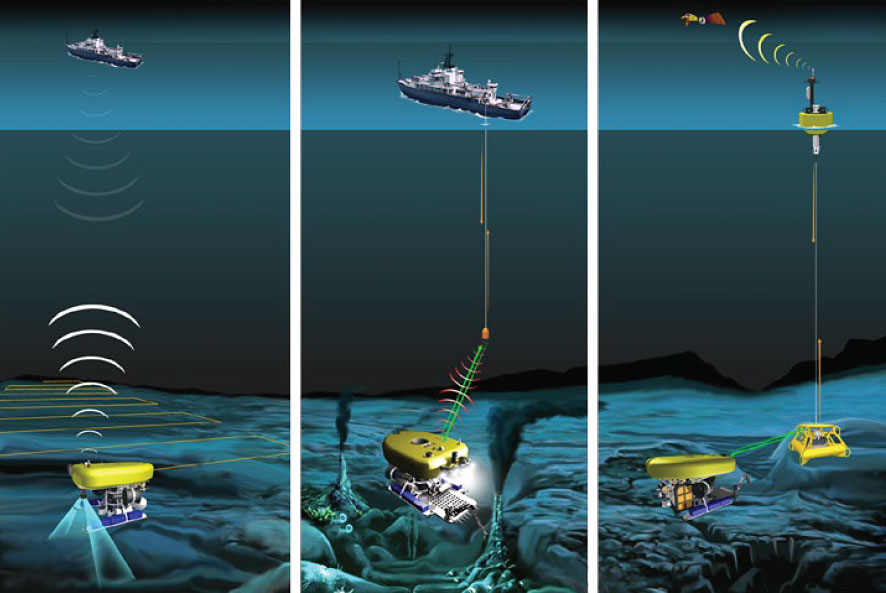Untethered ROVs for intervention and surveys
Remotely operated vehicle (ROV) systems have traditionally used tethers to relay power and control signals down to the vehicles while at the same time transmitting sensor data and high-quality video up to the surface. But tethers also place significant constraints on vehicle operations. Winches and cables required to support the vehicles, for example, are quite large and can limit deepwater operations to large vessels with dynamic positioning capabilities.
WHOI engineers have developed a multi-mode, opto-acoustic communications system that eliminates many of these requirements while still providing highdefinition, low-latency video that pilots need for manipulator operations. The system’s optical modem provides links up to 15 Mbit/s through up to 100 meters of water. With suitable video compression, the optical modem can support real-time video. The system that was recently deployed on WHOI’s battery powered Nereus vehicle demonstrated the capability to operate the vehicle, to take samples, and perform work with no tether.
Principal Engineer
Andy Bowen
Principal Engineer and Director of National Deep Submergence Facility, WHOI
Last updated: March 5, 2013

